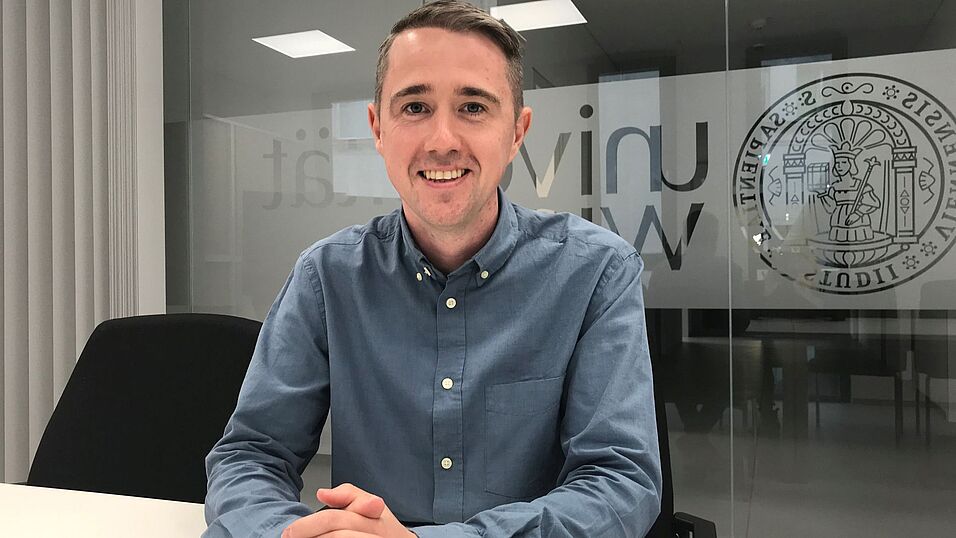The separation of alkenes from alkanes, benzene derivatives from one another, and trace contaminants from water are three of the "Seven chemical separations to change the world", listed in a commentary in the journal Nature a couple of years ago. These separations constitute good examples of how so-called hypercrosslinked polymers could help change the world. "We may be able to engineer solutions to such separations with our customised polymers," says chemist Rob Woodward.
There are a number of reasons why researchers are interested in this group of synthetic microporous polymers. "Firstly, you can pack a high amount of surface area into small quantities of material, giving them massive potential to adsorb compounds from the surrounding medium," explains Rob Woodward, who holds a tenure-track position for Applied Materials Chemistry at the Faculty of Chemistry.
Just a few of grams of porous hypercrosslinked polymer can contain a surface area of up to 6,000 – 7,000 square metres.
Secondly, researchers can easily synthesise these polymers from cheap and simple starting materials like benzene or phenol. To introduce functionality, aromatics containing the desired features can be used as feedstock in a hypercrosslinking reaction.
"The huge selection of commercially available aromatics means design options are almost limitless," says the scientist, who previously conducted his research at Imperial College London. Upon selection of the small building blocks, the porous networks are then built via a simple polycondensation reaction.
Customised polymers
The reagents for the synthesis and design of these polymers (i.e., the monomers, the catalyst, and the solvent) are generally cheap and readily available.
"The polymers’ designability and low-cost are a massive plus and, due to their good stability, there is the option to reuse the adsorbents multiple times. After the pores of the polymer are saturated with compounds adsorbed from the surrounding gas or liquid medium, these adsorbates can often be recovered from the pores as the adsorption interaction is primarily physical. As this process is typically not detrimental to the polymer, networks can then be recycled."
In principle, to remove pollutant aromatics from water, such as trace antibiotics – a common water pollutant, the antibiotics are adsorbed onto the surface of your customised polymer, before the polymer is simply removed, cleaned and dried for reuse.
Polymers as photocatalysts
Using hypercrosslinked polymers as photocatalysts is another research focus of Rob Woodward. With his team, he designed new polymers that are able to adsorb a reagent. "Then upon the application of light, the polymers are able to catalyse a reaction and convert the reagent into a more desirable product."
Just recently, Woodward’s team delivered a proof-of-concept for a polymer that adsorbed the highly inert greenhouse gas CO2 and changed it into CO or CH4, so called "solar fuels".
Exploring new connections for applications
"I envision for my work the ability to see an application, consider what properties an ideal absorbent would contain, and then design porous polymers with these features in mind, creating adsorbents specifically targeted to said application."
"Unlike many leading porous materials, hypercrosslinked polymers can tolerate water and acids, as well as high temperatures," says the scientist. "In our work, we exploit these properties to apply our materials to different applications, such as liquid phase extraction and very recently photocatalysis. Ultimately, we want to provide scientists with a platform for the design of porous materials tailored toward their own research needs."
Ass. Prof. Robert T. Woodward obtained his PhD from the University of Liverpool in the UK, followed by a short post-doctoral position. He then moved to Imperial College London’s Department of Chemical Engineering as new member of the Polymer and Composite Engineering group before spending some time in the Multifunctional Nanomaterials group. In July 2020, he started his tenure-track position for Applied Materials Chemistry at the University of Vienna’s Department of Materials Chemistry.

